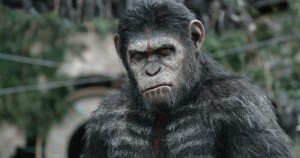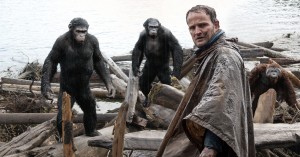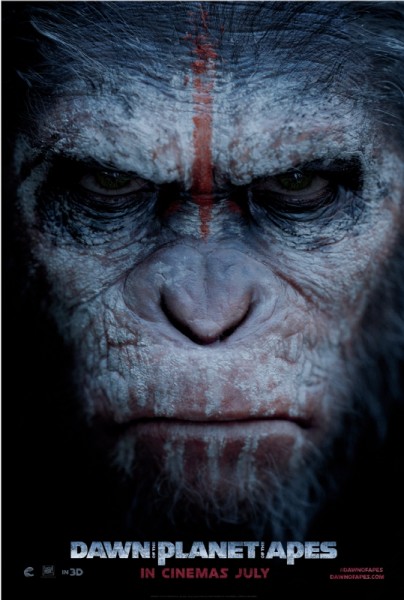Dawn of the Planet of the Apes films Vancouver and Louisiana for San Francisco
Sci-fi sequel Dawn of the Planet of the Apes followed the example of its 2011 predecessor Rise of the Planet of the Apes by filming mainly in Louisiana and Vancouver. The producers used generous filming incentive deals to create the movie’s dystopian San Francisco setting.
Dawn picks up the action ten years after the events of the previous movie, with intelligent apes having created their own community near San Francisco, while humans have been almost wiped out by the virus that was unleashed a decade before.
 The movie’s production team was called on to create a world where human influence had massively declined. New Orleans became the main filming location, partly because of Louisiana’s uncapped 30% filming incentive. Production was based at Big Easy Studios, which offered eight sound stages and 250,000 square feet of floor space. Location filming focussed on parts of the city that most resembled San Francisco.
The movie’s production team was called on to create a world where human influence had massively declined. New Orleans became the main filming location, partly because of Louisiana’s uncapped 30% filming incentive. Production was based at Big Easy Studios, which offered eight sound stages and 250,000 square feet of floor space. Location filming focussed on parts of the city that most resembled San Francisco.
“We completely changed a downtown intersection of New Orleans into downtown San Francisco for our Human Colony Set,” explains Louisiana-based Location Manager Jason Waggenspack: “We found a dead section of highway that crossed over the interstate in New Orleans East and turned it into the Golden Gate Bridge, [and] we turned an abandoned power plant along the Mississippi River into several sets.”
Arranging three-month-long street closures was a major task for Waggenspack and his team, and required co-ordination with multiple city agencies and service providers. “It was the most challenging thing I have ever had to do on a film. It was a lot of fun and I am so thrilled about the end result!”
We found a dead section of highway that crossed over the interstate in New Orleans East and turned it into the Golden Gate Bridge.
Jason Waggenspack, Location Manager
Around four weeks of shooting took place in and around Vancouver, with forest filming bringing its own set of challenges. There were practical requirements related to the advanced motion-capture technology that was used to film the actors’ performances for later translation into their ape characters. For the first time, the equipment was being mainly used on location rather than in a studio setting.
“We needed areas that looked as if there had been very little human activity in them,” recalls the film's Vancouver Location Manager Catou Kearney: “We also had to find locations that could support the technical requirements for the film [because] 3D and motion capture work adds an element of difficulty. Remote feel but not too remote!
 “We worked in Capilano River Regional Park (in northern Vancouver) and Golden Ears Provincial Park (east of the city), as well as a location south of Squamish. We scouted quite extensively before choosing these locations.”
“We worked in Capilano River Regional Park (in northern Vancouver) and Golden Ears Provincial Park (east of the city), as well as a location south of Squamish. We scouted quite extensively before choosing these locations.”
Sets were built in these woodland areas and existing paths were covered, while cables and rain towers brought in for the shoot had to be hidden away. The production team worked closely with local authorities to organise access and logistics. Among the biggest challenges were dealing with bad weather and taking the time to trek to the locations carrying heavy equipment.
“It was very cold and rainy during filming as well and that is always a challenge!” Kearney adds: “The other challenge was to find creative ways to support the technical requirements in conditions that were not ‘tech-friendly’!”
 Just four days of filming took place in San Francisco itself, which has become the reality for an iconic city that lacks a competitive filming incentive or purpose-built studio infrastructure. Dawn of the Planet of the Apes continued the trend as a big-budget production spending just a few days in the city to get shots that established a sense of place.
Just four days of filming took place in San Francisco itself, which has become the reality for an iconic city that lacks a competitive filming incentive or purpose-built studio infrastructure. Dawn of the Planet of the Apes continued the trend as a big-budget production spending just a few days in the city to get shots that established a sense of place.
Susannah Greason Robbins, Executive Director of the San Francisco Film Commission, says that this year a similar approach is being taken by the earthquake disaster movie San Andreas (filming mainly in Australia) Marvel’s Ant-Man (based in Atlanta), and Terminator: Genesis (shooting in Louisiana).
The California production industry is supporting a new bill that would see the state’s filming incentive programme expanded and its budget increased.
Robbins comments: “It would mean that blockbusters like Dawn of the Planet of the Apes could remain in California and keep hundreds of local jobs, in addition to the millions of dollars that we are currently losing out on to states with stronger incentives.”
(Photos: Weta Digital/20th Century Fox)
Related Posts
- Dwayne Johnson earthquake drama San Andreas films Queensland as California
- HBO drama Hemingway & Gellhorn doubles San Francisco for global locations
- On location in San Francisco with Film SF Executive Director Susannah Greason Robbins
- HBO comedy series Looking films on location in San Francisco
- Dwayne Johnson films scenes for disaster movie San Andreas in San Francisco
- Crime drama NCIS New Orleans films on location on Navy destroyer in Baton Rouge
- Hollywood exec warns Louisiana filming incentive change could lose business
- War for the Planet of the Apes begins filming in Vancouver
Related posts:
Comments
Not Logged in
You must be logged in to post a comment
There are no comments